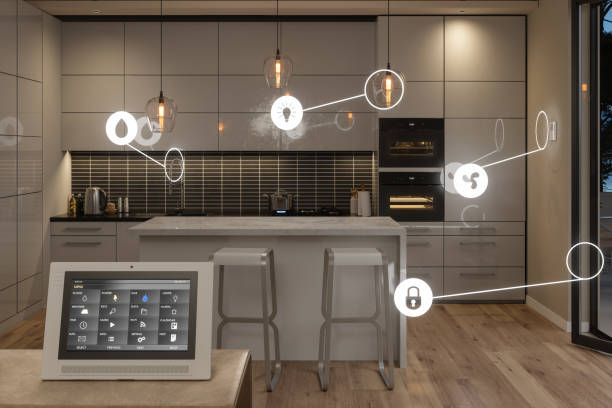The Importance of WiFi Mesh Networks in Modern Home Automation

As
you set up your smart home, you’re probably aware that reliable internet
connectivity is essential for your devices to function efficiently. You’ve
likely experienced frustration with dead spots and dropped connections in your
home. A WiFi mesh network can solve these issues, but how does it work, and what
benefits can it bring to your automated home? By understanding the ins and outs
of WiFi mesh networks, you’ll be able to make an informed decision about
whether it’s right for you – and that’s exactly what we’ll explore next.
What Is a Wifi Mesh Network
Imagine your home as a large,
interconnected web of devices all competing for a stable internet connection.
In a smart home setup, multiple devices connect to the internet, creating a
complex network. A WiFi mesh network is a system designed to provide reliable
internet coverage throughout your home. It’s especially important for smart
home manufacturer and home automation manufacturer systems that rely on stable
internet connectivity. A WiFi mesh network consists of multiple access points,
or nodes, that work together to provide a strong, reliable internet connection.
Each node communicates with the others, certifying seamless coverage and
minimizing dead spots. By providing a robust and stable internet connection,
WiFi mesh networks help guarantee that all devices in your home stay connected.
Benefits for Smart Homes
As you set up your smart home, a
reliable internet connection is essential to the smooth operation of your
devices. A WiFi mesh network provides this reliability by ensuring that your
devices stay connected to the internet at all times. With a mesh network, you
can control and monitor your smart devices seamlessly, even in areas with weak
WiFi signals. This leads to improved device performance, reduced latency, and
increased overall efficiency. You’ll also experience fewer dropped connections
and interruptions, making it ideal for applications that require real-time
data, such as video streaming and voice control. By investing in a WiFi mesh
network, you can create a robust and connected smart home ecosystem.
Key Features and Advantages

A WiFi mesh network’s key
features and advantages are rooted in its design and functionality. You’ll
notice that it provides whole-home coverage, ensuring a reliable connection
throughout your space. With a single network name and password, you can
seamlessly roam between nodes, eliminating dead zones and dropped connections.
You’ll also appreciate the self-healing feature, which automatically adjusts
the network if a node goes down. Additionally, you can prioritize devices and
traffic, ensuring critical applications receive sufficient bandwidth. Advanced
security features, such as WPA2 encryption and regular firmware updates,
protect your network from potential threats. These features and advantages make
WiFi mesh networks an ideal solution for modern home automation.
How WiFi Mesh Networks Work
Now that you’ve seen the
benefits of WiFi mesh networks, let’s examine the underlying technology that
makes them so effective. A WiFi mesh network consists of multiple access points
(APs) connected to each other via wireless links or Ethernet cables. These APs,
also known as nodes, work together to provide seamless coverage and
connectivity throughout your home. Each node acts as a repeater, relaying data
between the internet service provider (ISP) and your devices, ensuring a strong
and stable connection. As you move around your home, your device automatically
switches to the nearest node with the strongest signal, minimizing dead spots
and dropped connections. This self-healing mesh topology enables efficient data
transmission and peak network performance.
Choosing the Right System
Several factors will influence
your WiFi mesh network system selection, so it’s essential that you carefully
consider your specific needs before making a purchase. You’ll need to determine
the size of your coverage area, the number of devices that’ll be connected, and
the required speed. Check the system’s compatibility with your existing devices
and consider the number of Ethernet ports available. Additionally, look for
systems that support the latest WiFi standards, such as WiFi 6 or 6E, and have
a strong focus on security, including WPA3 encryption and regular firmware
updates. Some systems also offer additional features like guest networks, parental
controls, and Quality of Service (QoS) settings.
Conclusion
You’ve learned about the importance of WiFi
mesh networks in modern home automation. By implementing a WiFi mesh network,
you’ll enjoy a robust and stable connection that minimizes dead spots and
dropped connections. This enables your smart devices to operate efficiently,
ensuring a smooth and automated home experience. With its key features and
advantages, a WiFi mesh network is essential for a reliable and seamless home
automation system that meets your needs.
Comentarios
Publicar un comentario